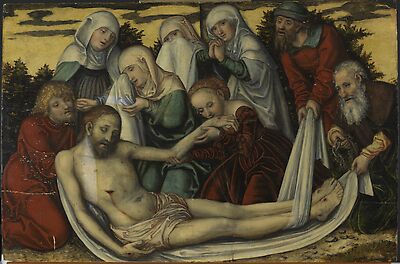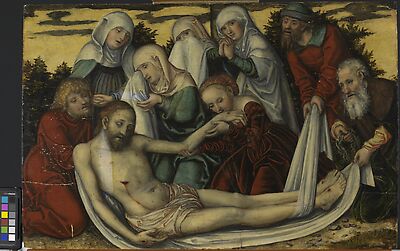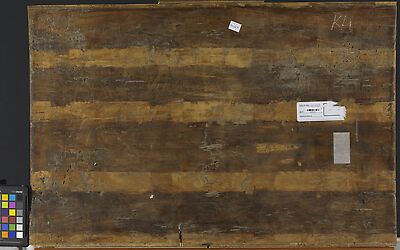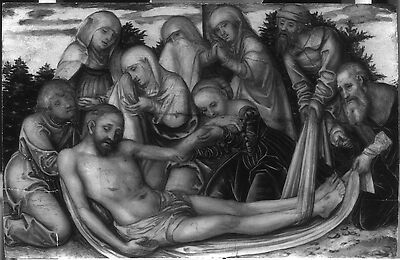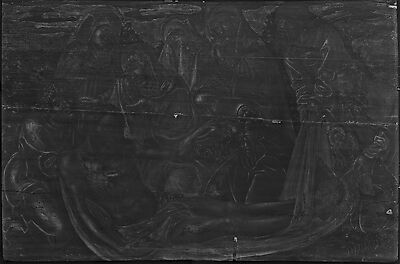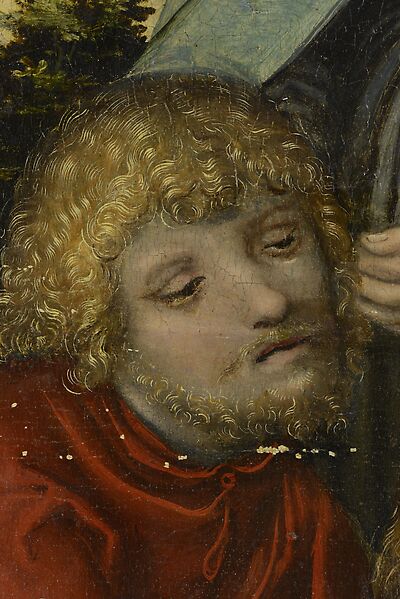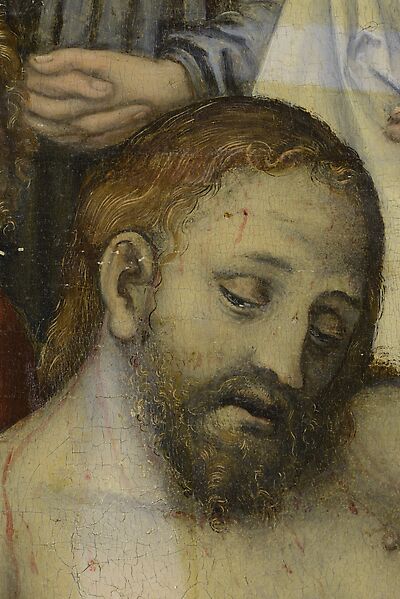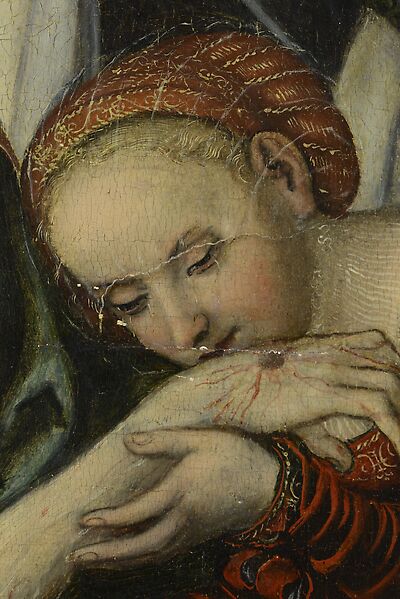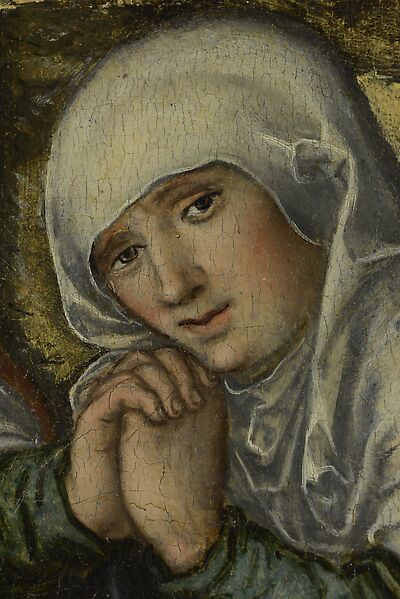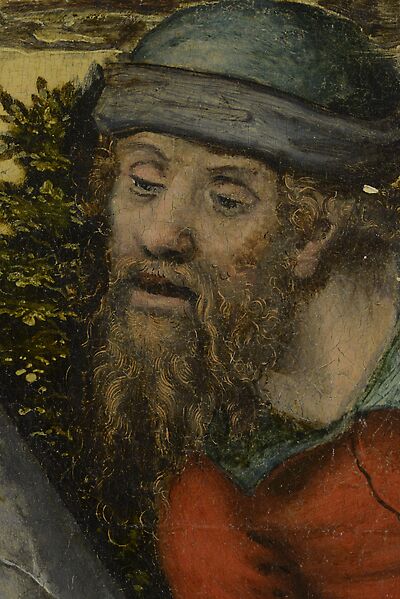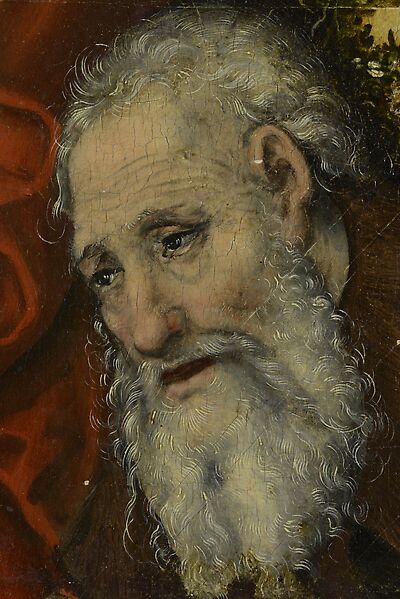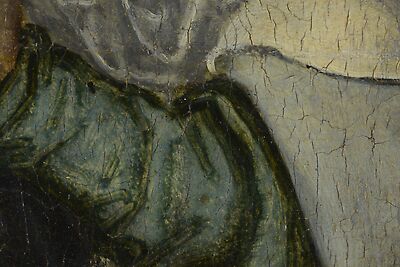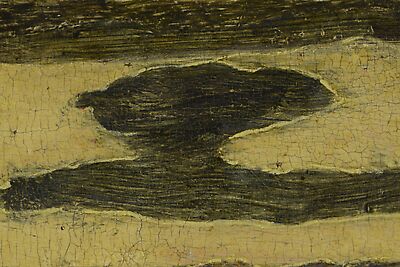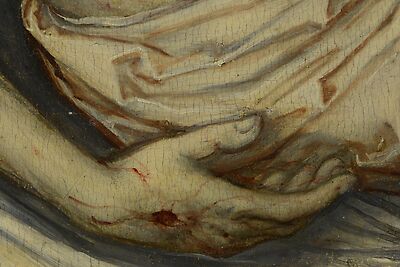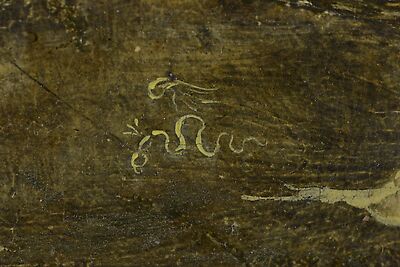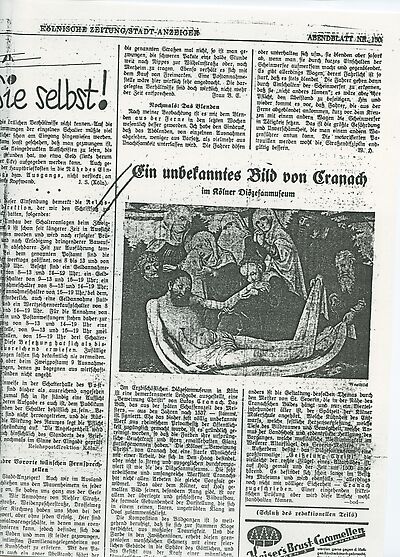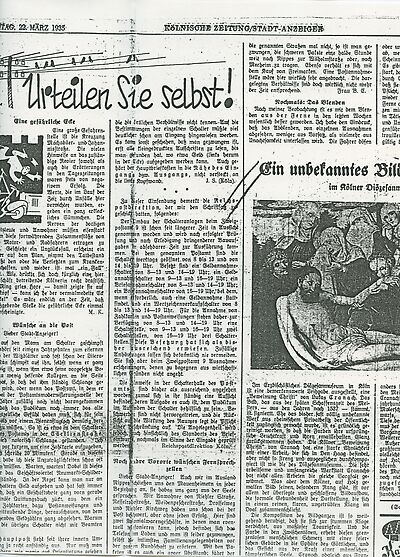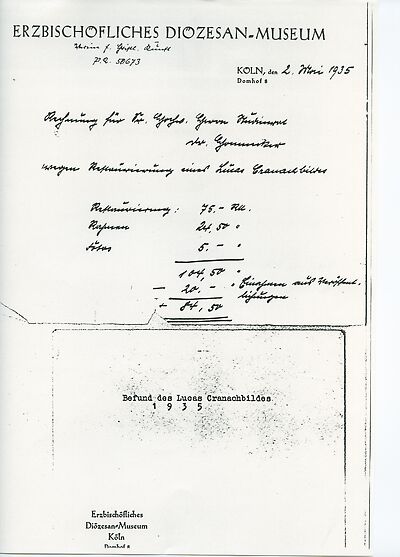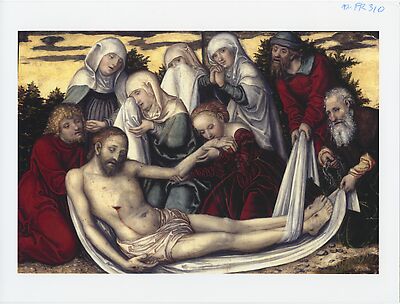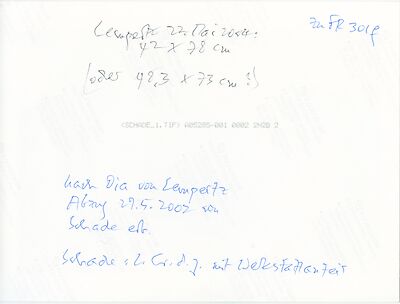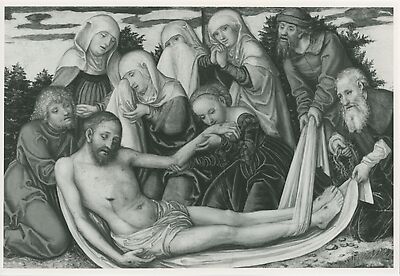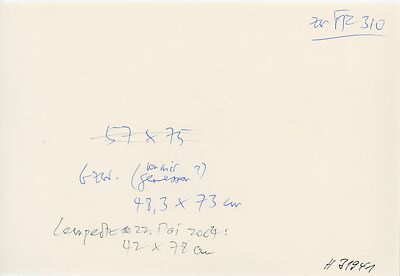- Attributions
-
Lucas Cranach the Elder and Workshop
Lucas Cranach the Elder
Attributions
| Lucas Cranach the Elder and Workshop | |
| Lucas Cranach the Elder | or the Younger [Lempertz online database: https://www.lempertz.com/de/kataloge/lot/856-1/1033-lucas-cranach-d-ae.html; accessed 26-03-2019] (no longer available online, 22.11.2021) |
| Lucas Cranach the Younger | or Lucas Cranach the Elder?, Koepplin considers it 'more probable' to be a work by the son |
- Production dates
- about 1540
about 1550
Production dates
| about 1540 | [Heydenreich, Blumenroth, unpublished examination report, 31.03.2023] |
| after 1537 | [cda 2019] |
| about 1550 | [Lempertz online database: https://www.lempertz.com/de/kataloge/lot/856-1/1033-lucas-cranach-d-ae.html; accessed 26-03-2019] (no longer online 22.11.2021) |
- Dimensions
- Dimensions of support: 42 x 78 cm
Dimensions
Dimensions of support: 42 x 78 cm
[Lempertz online database: https://www.lempertz.com/de/kataloge/lot/856-1/1033-lucas-cranach-d-ae.html; accessed 26-03-2019] (no longer online 22.11.2021)
- Signature / Dating
Artist's insignia upper right: serpent with dropped wings
Signature / Dating
Artist's insignia upper right: serpent with dropped wings
- Inscriptions and Labels
On the reverse: - label: 'SALE No 10389'
- with chalk: '4'
[Heydenreich, Blumenroth, unpublished examination report, 31.03.2023]
- with chalk: '4'
Inscriptions and Labels
Inscriptions, Badges:
On the reverse:
- label: 'SALE No 10389'
- with chalk: '4'
[Heydenreich, Blumenroth, unpublished examination report, 31.03.2023]
- Owner
- Private Collection
- Repository
- Private Collection
- CDA ID
- PRIVATE_NONE-P271
- FR (1978) Nr.
- FR-none
- Persistent Link
- https://lucascranach.org/en/PRIVATE_NONE-P271/
